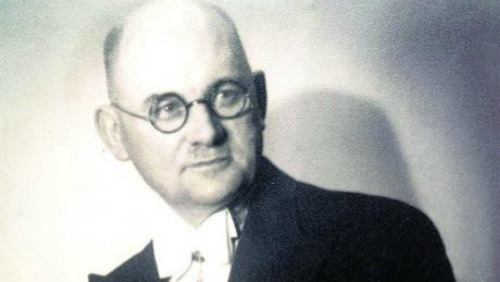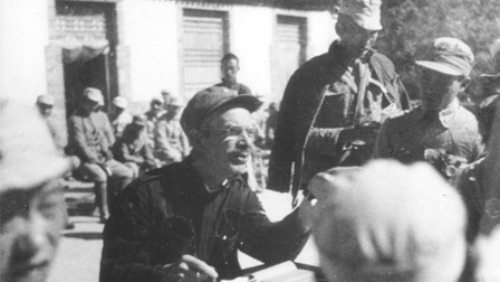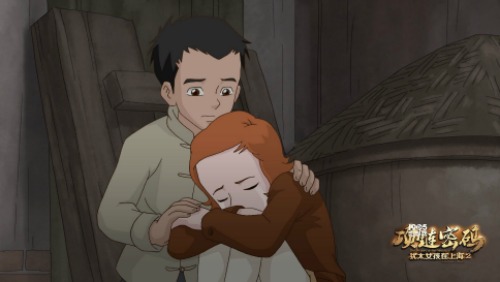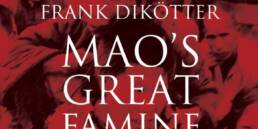“What war?” is a response I often hear after mentioning the Second Sino-Japanese War to friends in Europe or America. Although the Second Sino-Japanese War (1937-1945)[1] is actively commemorated within China, its history is relatively unknown in other parts of the world.
For many people in the West, the war in China happened far away, and was not part of the “world war” but of “China’s war with Japan.” It is often excluded from history classes on World War (WWII) in Europe or America, leaving many people with limited to no knowledge of it. Yet nowhere in the world did the war last as long as in China, and nowhere, except for in the Soviet Union, were as many people killed.[2]
The Second Sino-Japanese War officially commenced on July 7th 1937 and merged into World War II after Japan’s attack on Pearl Harbour in 1941. It ended on August 15th 1945 when the Japanese troops surrendered. A specifically painful part of the Second Sino-Japanese War is the so-called ‘Nanjing Massacre’, the Japanese occupation of Nanjing in the winter of 1937 when Japanese soldiers unleashed unprecedented violence on Chinese soldiers and civilians. Although the history of the Second Sino-Japanese War is still very much alive in China today, for nearly forty years after the war little was published about the Japanese occupation of China. Major works on WWII, including Churchill’s Memoirs of the Second World War (1959) or Michel’s Second World War (1947), did not mention important Chinese war events such as the Nanjing Massacre at all.
Over the past few decades, the Second Sino-Japanese War has gradually started to receive more attention in Western countries as a ‘forgotten war.’ The renowned British historian Rana Mitter titled his most recent book on the Second Sino-Japanese War: Forgotten Ally: China’s World War II, 1937-1945, in which he writes that “In the West, (..) the living, breathing legacy of China’s wartime experience continues to be poorly understood.”[3] In her acclaimed work The Rape of Nanjing (1997), Iris Chang called the ‘Nanjing Massacre’ the “forgotten Holocaust.”[4] The Second Sino-Japanese war is now also often referred to as China’s ‘forgotten war’ in WWII-related articles and literature.[5]
Within China, the war is anything but forgotten. Memories of war are kept alive through museums and memorials, through movies and TV dramas. Its history still deeply affects the relations China has with Japan up to this day. A wide-scale survey from the late 1990s revealed that over half a century after the war ended, no less than 84% of Chinese people still mostly associated ‘Japanese’ with ‘the Nanjing Massacre.’[6] It shows that the war is deeply ingrained in the collective memory of the Chinese, even if decades have passed and new generations have grown up without personal recollections of this war.
‘Collective memory’ is key to understanding any group identity, perhaps most importantly that of nations. Every nation has a form of collective memory; a memory that is shared between many, if not most, of the members of its national community. These memories are transmitted from generation to generation, and form a powerful unifying force that is crucial to national identity forming.[7]
Histories of war, and how they are remembered, divide nations and their people. The ruptures remain visible long after the war has ended, and some scars never heal. This is apparent in Sino-Japanese relations, that are, to this day, overshadowed by disagreements over Japan’s World War II legacy. But during my participation in the Visiting Program for Young Sinologists (Beijing 2016), I realized that war memories do not always divide people and nations. The field trips and research during the program brought some war stories to my attention, such as that of Doctor Norman Bethune, where Chinese people and foreigners worked together to save people and survive hardships. In these unique histories, the horrors of war united people instead of dividing them.
Many of the stories of the Second Sino-Japanese War go beyond cultural and national borders. They are about people helping people. Over the past decades, these histories have gradually been receiving more attention, and are remembered through memorials and popular culture, both in and outside of China – they are ‘transnational.’ Transnational memory is “a pillar of memory that transcends ethnic and national boundaries.”[8] It is a “multi-actor commemoration field” where different politics and cultures play an important role.[9] Transnational memory, like collective memory, is a shared memory of the past that is crucial in forming bonds. Being transnational, these memories are not confined to the borders of the nation-state. Instead, they are shared between nations and can function as a unifying force.
The Second Sino-Japanese War is not just “China’s war.” With China as one of the principal wartime Allies, its history is part of World War II at large, and should not be forgotten. It was not just a war that created divide amongst nations, it was also a war where people of different backgrounds united, side by side, to protect the people and fight the enemy. There are a lot of such stories and they cannot all be told here. I will therefore focus on just some exemplary ones: the unique histories of John Rabe, Norman Bethune, and that of the Jewish refugees in Shanghai. Among the many stories there are to be told of the Second Sino-Japanese War, they characterize, in their own way, how the history of “China’s war with Japan” war is a global one. Its remembrance unifies people from different nations and strengthens their bond – it is a history for the world to remember.
‘Living Buddha’: The Story of John Rabe
Some historical accounts take the year 1931, when the Japanese army occupied Manchuria in the northeast of China, as the start of the Second Sino-Japanese War. Most historians, however, take the Marco Polo Bridge Incident[10] of July 7th 1937 as the official beginning of the war, after which the Japanese army launched its large-scale invasion of China. Beijing and Tianjin fell on July 29th, the Battle of Shanghai followed in August.[11]
Before the Battle of Shanghai, a deep contempt for the Chinese was already rooted among Japanese soldiers.[12] But when the expected quick victory over Shanghai had turned into a fierce three-month battle in which 40,000 Japanese died, there was a heightened sense of revenge among the Japanese troops.[13] After the fall of Shanghai on November 9th, new orders were issues to capture Nanjing on December 1st. Nanjing, China’s capital at the time, had a population of approximately 1.3 million people and was praised as one of the greatest cultural and political centers of China. The Japanese army wanted to make China surrender within one “knock-out blow”.[14]
It was here, in the city of Nanjing, that the German businessman John Rabe resided as the director of the local Siemens-China corporation. Rabe had lived and worked in China for nearly two decades. In 1934, he started a German school on his Nanjing property and needed the approval of the German NSDAP (Nazi Party) for teachers and funds; he joined the Nazi Party the same year.[15] It was, in part, his status as a German national and member of the NSDAP that later enabled him to save thousands of people in Nanjing from almost certain death during one of the most horrific episodes of the Second Sino-Japanese War.
As Japanese troops were getting closer to Nanjing in the weeks preceding December 7th 1937, many foreigners and Chinese nationals left the city. Rabe had previously departed on a holiday to the coastal resort of Beidaihe (Peitaiho), but decided to return “to protect his property” and for the “question of morality.” In his well-documented diary, he wrote: “Under such circumstances, can I, may I, cut and run? I don’t think so. Anyone who has ever sat in a dugout and held a trembling Chinese child in each hand through the long hours of the air raid can understand what I feel.”[16]
In November, an International Committee was formed by Rabe and a group of mostly British and American doctors and professors to set up a Safety Zone, a protection zone for civilians in Nanjing of about two and a half square miles. Rabe was the Chairman, and its headquarters were at the house of minister Zhang Qun, who made it available for the German embassy which then turned it over to Rabe. Refugees moved into the Safety Zone from early December. By Christmas, there would be around 200,000 people within the Safety Zone, of which 602 people found refugee in Rabe’s own house and on his ground. [17]
By early December, the Japanese army had encircled the city walls of Nanjing. Soldiers and civilians were trapped like rats within their own city, and had no choice but to surrender. When Nanjing fell on December 13, the atrocities began, and the Japanese opened fire on both soldiers and civilians. They looted and burnt houses, killed innocent people and raped young girls and women. The terror lasted roughly six to eight weeks after the fall of the city. Approximately 300,000 people were killed.[18]
Rabe became desperate when Japanese soldiers kept breaking into the Safety Zone for looting and raping. In his diary he wrote: “We don’t know how we can protect the people. The Japanese people are completely out of control.” Yet he persisted in his efforts to keep the Zone free from Japanese attacks by making numerous requests to the Japanese authorities and commanders, who answered they would “promise to respect the Zone if possible”[19], and by clearly marking the zone with Nazi signs and flags. Throughout the chaos of the atrocities, the area was seen as the safest place of the city. During the weeks of Japanese violence, the Safety Zone sheltered thousands of people, with Rabe never neglecting his duty to protect the people within the Zone. He distributed food and kept account of everything that happened during the Japanese occupation. In the documentary John Rabe, The Good Nazi of Nanking (2008), one survivor says: “Rabe saved our lives. Without him, we would have been dead. We wouldn’t be alive today.” The Safety Zone is estimated to have prevented the deaths of 200,000 to 300,000 refugees.[20]
By the spring of 1938, the Japanese moved on, and the massacre ended. Ordered by Siemens, Rabe returned to Berlin where he gave talks and presentations on the Nanjing Massacre. But after the Gestapo shortly arrested Rabe and forbade him to talk of the Japanese, Rabe became an outcast, and Siemens temporarily send him to Afghanistan.[21] After the Russian invasion of Berlin, Rabe’s family apartment was bombed out. The family became poor, and Rabe suffered from hunger and homesickness to China. Although the people of Nanjing extended their help to Rabe in 1948 by sending him packages and money, Rabe’s health was declining and he died in 1950.[22] The Chinese government later honored Rabe for his humanitarian efforts, and his story has been incorporated in the exhibitions of Chinese national war museums, such as the one in Nanjing. Many Chinese people praised John Rabe as the “Living Buddha of Nanjing.”[23]
Norman Bethune, Doctor of the Battlefield
Another man honored for his role in the history of the Second Sino-Japanese War is Doctor Norman Bethune. He was a Canadian surgeon, and the first doctor to bring blood banks to the battlefields. He was affiliated with the Communist Party in Canada, and after working as head of the Blood Transfusion Unit during the Spanish Civil War, he joined the communist forces in China.[24] In 1938, Bethune led a medical unit of Canadian and American doctors to provide medical services for the Eight Route Army, the major communist force fighting against the Japanese. He performed battlefield operations, once even doing 71 operations within 40 hours.[25] In China, he launched the slogan: “Doctors! Go to the wounded! Do not wait for them to come to you!” Through his ‘guerilla medical services’, Bethune saved the lives of thousands of men fighting against the Japanese.
In November of 1939, Bethune contracted blood poisoning from a cut during an operation on a wounded Chinese soldier. Lacking the proper medicinal care, he died shortly after. Mao Zedong praised Bethune after his death in 1939 and later wrote an article about him that became one of the “required readings” during the Cultural Revolution, which made Bethune very famous in China under his Chinese name of Báiqiú’ēn (白求恩).[26] He is honored and memorialized as a martyr in the the city of Shijiazhuang in Hebei. In the same province, I visited the location of the battlefields and a memorial place dedicated to him during the Visiting Program for Young Sinologists.
The stories of people like Rabe and Bethune, who risked their own lives to save others, have been getting more attention outside of China over the past decades. As for Rabe, his own diaries bear witness to everything he achieved. But these well-kept diaries, inherited by his son, were not published until 1998. One of the reasons for the fact his diaries remained unknown for so long was that Rabe’s previous status as a Nazi raised concerns within his family, who thought publishing the diaries of a Nazi might be deemed politically incorrect.[27] When his diary was finally published under the title The Good Man of Nanking, it became an international bestseller. John Rabe’s story was turned into an award-winning movie in 2009.[28] Rabe’s story was also featured in other successful Chinese and non-Chinese films such as City of Life and Death[29] in 2009 or Nanking[30] in 2007. His house in the former Safety Zone was turned into a memorial place and museum in 2006. The German Siemens company greatly contributed to this museum, stating they hoped it would further “promote Sino-German friendship.”[31]
Although Doctor Norman Bethune remained relatively unknown in his home country of Canada for a long time, his story is now increasingly gaining attention within Canada and elsewhere. The TV mini series Bethune was released in Canada in 2006, and Bethune has been the focus of many books published over the past decade, such as The Mind of Norman Bethune (2002) or Phoenix: The Life of Norman Bethune (2011). A life-size statue has been raised in Montreal, Canada, by the People’s Republic of China to honor Bethune. When Canadian Prime Minister Justin Trudeau visited Beijing in 2016, he presented the Chinese government with a Norman Bethune medallion, illustrating the history between the two nations and their good friendship.[32]
“The Shanghai Ghetto”: The History of Jewish Refugees in China
The year 1938, when Rabe and Bethune were fighting to save lives, was a year of despair for many people. While the Second Sino-Japanese War was well underway, Europe was getting increasingly dangerous for Jews. With the Nazi’s rising to power, anti-Jewish attacks became more common and reached a new zenith during the Kristallnacht (Crystal Night) of November 9. Thousands of Jews fled from Germany and Austria. For 20,000 Jews, Shanghai became their refugee haven. The great majority survived the war.[33] The history of the Jewish refugees in Shanghai is relatively unknown, and even seemed forgotten for some time, but it has seen a ‘memory revival’ in China, Israel, and other countries across the world over the past decades.
The history of Jews in Shanghai during WWII is preceded by a long history of Jewish diaspora in China. China is the only country in East Asia where Jews have consecutively lived for the last 1000 years. Marco Polo already mentioned the presence of Jews in China in 1286, and there is historical evidence that Jews lived in the old city of Kaifeng since the 11th century.[34] Although the Jewish population of Shanghai arrived much later in history, it soon grew out to be one of China’s most vibrant Jewish communities.
After China was defeated by Britain during the first Opium War (1839-1842), Shanghai became an open port where foreign trade could flourish and where Britain could establish settlements. It was at this time, from the mid-19th to the early 20th century, that the first wave of Jewish people came to Shanghai, along with British merchants, to start businesses there.[35] A second wave of Jewish people arrived in Shanghai in the beginning of the 20th century to the 1930s from Eastern Europe and Russia. Together with the first wave of Jews in Shanghai, they had a thriving Jewish community with Jewish synagogues, cemeteries, and institutions.
The existing Shanghai Jewish community before the war was one of the reasons, albeit not the main one, why German and Austrian Jewish refugees fled to Shanghai in the late 1930s. For many Jews at the time, Shanghai became their destination not by choice, but because they had no other choice.[36] As anti-Jewish terror grew strong in Nazi-ruled Germany and Austria, many Jews wanted to leave the country. But despite the 1938 Evian Conference in France, that was joined by 32 nations to resolve the Jewish refugee crisis, other countries remained reluctant to take in Jewish refugees. European countries were closing their borders to Jews.[37] Without the required visas needed to enter countries such as America, many Jews were desperate.
Shanghai, however, was an exceptional place: it was an open port which was home to two relatively large Jewish communities. There was no need for a visa, since it had the unique status of a city under the control of foreign powers. For those who could afford to go on a boat to China, it was the best refugee haven.[38] Although the city was in chaos, the Jews were safe in Shanghai. This was made possible, amongst others, by Chinese government’s efforts to assist “stateless Jews” and the roles of several individuals.[39] Chinese diplomat He Fengshan (Ho Fengshan), the former Chinese Consul General in Vienna, for example, granted travel documents to Austrian Jews against the orders of his supervisor.[40] But Chinese intellectuals such as He Yiwen also called on the public to offer assistance to Jewish refugees. In 1939, he wrote: “[W]e should ‘treat other people as you would want them to treat you’ and be sympathetic to Jewish refugees.” He also emphasized that the Chinese should do everything they could “to help the Jewish refugees”, and to “unite and stand” with them to fight the fascist powers.[41]
After the anti-Jewish pogroms during Kristallnacht, many Jews arrived in China – a pivotal time for China in its war against the invading Japanese.[42] In the 1933-1940 period, approximately 20,000 European Jews came to China, of which a large majority arrived in Shanghai per boat.[43] Another last group of Jewish arrived in China via the Japanese city of Kobe. It was a Polish Jewish community who had ended up in Kobe via Siberia, but left again after the outbreak of the Pacific War. By the early 1940s, four different Jewish communities, coming from four different “waves” of diaspora, lived in Shanghai together at the same time.
It was the Tilanqiao area of Shanghai’s Hongkou district (also spelled as ‘Hongkew’), that became the main Jewish neighborhood. Since it was among the lesser developed areas of Shanghai, the cost of living was cheap there. It was also an area that was under exclusive Japanese control since the summer of 1937. By the time the first big flux of European Jews arrived in Shanghai, the city was divided into four separate administrative units. Besides the Hongkou area that was dominated by Japanese, the ‘International Settlement’ was under the control of a Council representing 11 different countries. The ‘French Concession’ was governed by the French consul, and the ‘Chinese City’ was under the control of the Chinese Nationalist government, although that part also fell into the hands of the Japanese by late 1937.[44] The Hongkou area was turned into a “designated area for stateless refugees” by the Japanese, later also called the “Shanghai Ghetto”, where around 20,000 of its 50,000 residents were Jewish. Japanese authorities controlled the district and prohibited Jews from leaving the ghetto without the required papers, which were hard to obtain.
Despite suffering hardships, the Jews in the Shanghai Ghetto were relatively safe and far removed from the horrors of Europe. In 1938, the Japanese government had stated it would not persecute Jews, although they also made it clear that the only ways for Jews to survive was to cooperate with the Japanese authorities.[45] Jewish children attended school and could freely play around the streets with their Chinese friends. Nina Admoni, a Polish Jew who spent her childhood in the ghetto, told Times of Israel in 2012 that she looked back on her experience in Shanghai fondly and even idyllically: “The Chinese people in Shanghai were very kind, that’s what I remember.”[46]
After WWII, the “Hongkou Ghetto” was demolished. The last synagogue of Shanghai stopped its services in 1956. When the war had ended, Jews gradually left Shanghai for multiple reasons. The upheaval of the Chinese Civil War followed by the communist victory in 1949 meant that the Jewish could no longer continue to do business in China. As many left for North America, Australia, New Zealand or Palestine, only a few hundred Jews were left across China by the 1960s[47]. While parts of the old neighborhood have disappeared, new initiatives are keeping its memories alive. The neighborhood’s former synagogue now houses the Shanghai Jewish Refugees Museum. The museum was opened in 2007 to commemorate the Jewish refugees who lived in Shanghai during WWII. It frequently holds new displays and events to catch the audience’s attention.
The historical revival of Shanghai’s Jewish history also takes place outside museums, as stories of war are narrated in popular culture and cyberspace. In September of 2016, Shanghai’s Hongkou district government released a multilingual website[48] telling different stories of the Jewish diaspora in Shanghai during the World War II. The project, launched by Shanghai International Studies University and the Shanghai Jewish Refugees Museum, has collected stories from the time Jews fled to Shanghai to escape Nazi persecution.
China’s first animated movie about the Jewish history of Shanghai premiered in 2010. A Jewish Girl in Shanghai (犹太女孩在上海)[49] tells the story of the hardships of the Jewish girl Rena and her brother Mishailli, who flee to Shanghai from Europe after their father goes missing and their mother is abducted by Nazis. The film shows how the Jewish girl Rena gets acquainted with a Shanghainese street vendor and befriends the local Chinese community. The movie has been described as “China’s first homegrown Jewish film.”[50] A sequel to the animation film appeared in 2015.
Also in 2015, the first musical themed around the Jews in Shanghai saw the light at the Shanghai International Arts Festival in October. The musical Jews in Shanghai (犹太人在上海) revolves around the blossoming love between a Jewish man and Shanghai woman during the chaos of WWII. The musical, a Chinese-Israeli initiative, premiered in Beijing in June of 2016, and traveled to Israel and Israel for more performances.[51]
The renewed interest for the Jewish community of Shanghai and the history of Jews in China has been blossoming for some years now. This is also apparent in the academic and literary world. While some Chinese universities now offer Judaic Studies programs or have courses on Jewish Diaspora in China, international authors, media and scholars have also been paying more attention to the topic of the WWII history of Jews in China.[52]
Shared memories of the history of WWII have contributed to the present strong relations between China and Israel. In 2015, the Consulate General of Israel in Shanghai published a video that featured hundreds of Israelis holding “Thank you” signs in Chinese as a sign of gratitude for Shanghai helping the Jews during WWII. It also includes a message from Prime Minister Benjamin Netanyahu expressing thanks to the Chinese people.[53]
The Second Sino-Japanese War is a traumatic event in the history of modern China. It is also a traumatic event in the history of the modern world. By sharing and remembering the many stories of this war that involved people who went beyond the borders of their own nations to save the lives of others, we build bridges between the collective war memories of different nations and work towards a transnational remembrance of China’s war with Japan. The histories of John Rabe, Bethune, or the refugee Jews, are just some examples of how China, to this day, shares memories of its war with Germany, Canada, Israel and other nations – these are memories of the past that strengthens their relations in the present.
National memories may help to built strong nations, but transnational memories help to built strong friendships. Keeping these stories alive is not just a way to remember the past of the war, but also a way to build on the future of the world.
Footnotes:
[1]In China generally referred to as the “War of Resistance against Japan” (抗日战争).
[2] Harmsen 2015. The exact number of China’s losses is unknown, but according to official government statistics, there were approximately 20 million dead and 15 million wounded from 1937-1945 (Chen & Chen 2014: 21).
[3] Mitter 2013: 9. Outside of the USA, Rana Mitter’s 2013 book is sold under a different title: China’s War with Japan, 1937-45: The Struggle for Survival.
[4] Chang 1997.
[5] The work by Professor Rana Mitter (2013) has greatly contributed to more international awareness about the Second Sino-Japanese war as a ‘forgotten war’ and China as the ‘forgotten ally’ of WWII.
[6] Koetse 2012: 21; Yang 2001: 50.
[7] De Cesari & Rigney 2014: 1; Koetse 2012: 16.
[8] Budryte 2013: 168.
[9] Budryte 2013: 168.
[10] A minor skirmish between a small number of Japanese and Chinese troops stationed near the Marco Polo [Lugou] Bridge just outside of Beijing escalated and served as a pretext for Japanese forces to seize Beijing.
[11] Dreyer 2016: 73.
[12] Wakabayashi 2010: 41-42.
[13] Historian Daqing Yang in John Rabe, The Good Nazi of Nanking (2008).
[14] Fujiwara 2008: 31; Gordon: 2003; Koetse 2012; Spence: 1991; Tokushi: 2002.
[15] Wickert 2000: ix.
[16] Rabe 2000: 5.
[17] Rabe 2000: 95-96.
[18] China’s official death toll estimate.
[19] Rabe 2000: 50.
[20] Qi 2009:500.
[21] Chang 1998: 191.
[22] Chang 1998: 192-195.
[23] Hu 2000: 159.
[24] Gnarowski 2009: 23.
[25] CCTV 2015.
[26] Chen 2016: 61.
[27] Chang 1998: 194.
[28] John Rabe. 2009. Directed by Florian Gallenberger. California: Strand Releasing Home Video, 2010, DVD.
[29] Nanjing! Nanjing! 南京!南京![City of Life and Death]. 2009. Directed by Lu Chuan
陸川. New York: Kino Lorber, 2011, DVD.
[30]Nanking. 2007. Directed by Bill Guttentag and Dan Sturman. New York: Image Entertainment, 2008, DVD.
[31] Xinhua 2006.
[32] CBC 2016.
[33] Gao 2011: 203.
[34] Xin 2010: 133.
[35] Guang 56.
[36] Xin 2016.
[37] Gao 2007: 3: 9.
[38] Gao 2011: 203; Meyer 2000: 71.
[39] Gao 2007: 49-50.
[40] Gao 2007: 50.
[41] Gao 2007: 24-25.
[42] Gao 2007: 49.
[43] Gao 2011: 203; Xin 2016.
[44] Gao 2007: 4.
[45] Gao 2007: 7.
[46] Shmulovich 2012.
[47] Xin 2016.
[48] URL: http://en.shisu.edu.cn/resources/features/jews-in-shanghai
[49] Yóutài Nǚhái Zài Shànghǎi 犹太女孩在上海 [A Jewish Girl in Shanghai]. 2010. Directed by Wang Genfa and Zhang Zhenhui.
[50] DeWolf, 2010.
[51] Yuan 2016: 30
[52] In 2016, Nanjing University, for example offered an online course on Jewish Diaspora in China taught by Dr. Xu Xin, an expert on the history of Judaism in China. Canadian writer Taras Grescoe published a non-fiction book (Shanghai Grand) about the topic in 2016. Also see DeWolf: 2010.
[53] Reuters 2015.
References
Bell, Duncan S. 2003. “Mythscapes: Memory, Mythology and National Identity.” The British Journal of Sociology 54(1): 63-81.
Budryte, Dovile. 2013. “Travelling Trauna: Lithuanian Transnational Memory After World War II.” In: Memory and Trauma in International Relations: Theories, Cases and Debates, edited by Dovile Budryte and Erica Resende, 168-181. New York: Routledge.
CBC. 2016. “Justin Trudeau’s official gifts to China a nod to his father.” CBC News, August 31 http://www.cbc.ca/news/politics/trudeau-china-gifts-bethune-medallions-1.3742783 [14.10.16].
CCTV News. 2015. “70 Seconds, 70 Years.” CCTV Africa, September 2 https://www.youtube.com/watch?v=3QSMKbCI7ts [14.10.16].
Chen, Lincoln and Ling Chen. 2014. “China’s Exceptional Health Transitions: Overcoming the Four Horsemen of the Apocalypse.” In: Medical Transitions in Twentieth-Century China, edited by Bridie Andrews and Mary Brown Bullock, 17-32. Bloomington/Indianapolis: Indiana University Press.
Chang, Iris. 1997. The Rape of Nanjing: The Forgotten Holocaust of World War II. London: Penguin Books.
Chen, Minjie. 2016. The Sino-Japanese War and Youth Literature: Friends and Foes on the Battlefield. London/New York: Routledge.
De Cesari, Chiara, and Ann Rigney. 2014. “Introduction.” In: Transnational Memory: Circulation, Articulation, Scales, edited by Ann Rigney and Chiara de Cesari, 1-29. Berlin/Boston: De Gruyter.
DeWolf, Christopher. 2010. “Chinese Animation Takes On the Holocaust.” Forward, Dec 17 http://forward.com/the-assimilator/134028/friday-film-chinese-animation-takes-on -the-holoca/ [11.10.16].
Dreyer, June Teufel. 2016. Middle Kingdom & Empire of the Rising Sun: Sino-Japanese Relations, Past and Present. New York: Oxford University Press.
Fujiwara Akira. 2008. “The Nanking Atrocity: An Interpretive Overview.” In: Bob Tadashi Wakabayashi (ed), The Nanking Atrocity 1937-38, 29-54. New York & London: Berghann Books.
Gao, Bei. 2007. “China, Japan and the Flight of European Jewish Refugees to Shanghai.” PhD Dissertation, University of Virginia.
Gao, Bei. 2011. “The Chinese Nationionalist Government’s Policy Toward European Jewish Refugees During World War II.” Modern China 37 (2): 202-237.
Gnarowski, Michael. 2009. “Editor’s Note.” In: The Scalpel, The Sword: The Story of Doctor Norman Bethune, Ted Allen and Sydney Gordon, 23-27. Ontario: DunDurn Press.
Gordon, Andrew. 2003. A Modern History of Japan: From Tokugawa Times to the Present. Oxford and New York: Oxford UP
Guang, Pan. 2008. “Jews in China: Legends, History and New Perspectives.” In Youtai – Presence of Perception of Jews and Judaism in China., edited by Peter Kupfer, 55-64. Frankfurt am Main, New York: Peter Lang.
Harmsen, Peter. 2015. “Why Do We Know So Little about China in World War Two?” History News Network, December 13 http://historynewsnetwork.org/article/161221 [12.10.16].
Hu, Hua-ling. 2000. American Goddess at the Rape of Nanjing: The Courage of Minnie Vautrin. Carbondale/Edwardsville: Southern Illinois University Press.
John Rabe, The Good Nazi of Nanking [John Rabe. Der Gute Deutsche von Nanking]. 2008. Documentary. Directed by Florian Hartung and Annette Baumeister.
Koetse, Manya. 2012. “The ‘Magic’ of Memory. Chinese and Japanese Re-Remembrances of the Sino-Japanese War (1937-1945).” Research Master thesis, Leiden University.
Mitter, Rana. 2013. Forgotten Ally: China’s World War II, 1937-1945. Boston/New York: Houghton Mifflin Harcourt.
Meyer, Maisie J. 2000. “The Interrelationship of Jewish Communities in Shanghai.” Immigrants & Minorities 19 (2): 71-90.
Qi, Shouhua. 2009. Purple Mountain: A Story of the Rape of Nanking. Connecticut: WingsasClouds Press.
Rabe, John. 2000 (1998). The Good Man of Nanking. The Diaries of John Rabe. New York: Vintage Books.
Reuters. 2015. “Israel Makes Video To Thank Shanghai For Helping Jews During Holocaust.“ The Jerusalem Post, August 28 http://www.jpost.com/Diaspora/Israel-makes-video-to-thank-Shanghai-for-helping-Jews-during-Holocaust-413572 [11.10.16].
Shmulovich, Michal. 2012. “Saved in Shanghai — a young girl’s story highlights a rare WWII place of refuge.” Times of Israel, August 25 http://www.timesofisrael.com/a-young- jewish-girls-escape-from-death-to-idyllic-shanghai-during-world-war-ii/ [1.10.16].
Spence, Jonathan D. 1991. The Search for Modern China. New York: Norton.
Tokushi Kasahara. 2002. “Remembering the Nanking Massacre.” In: Fei Fei Li, Robert Sabella and David Liu (eds), Nanking 1937: Memory and Healing, 75-95. London: M.E. Sharpe.
Wakabayashi, Bob Tadashi. 2010. The Nanking Atrocity, 1937-38: Complicating the Picture. New York / Oxford: Berghahn Books.
Wickert, Erwin. 2000 (1998). ‘Foreword.’ In: The Good Man of Nanking. The Diaries of John Rabe, John Rabe, vii-xix. New York: Vintage Books.
Xin, Xu. 2010. “Tracing Judaism in China.” Social Sciences in China 31 (1), 130–161
Xin, Xu. 2016. “Jewish Diaspora in China” [online course]. Coursera https://www.coursera.org/learn/jews-in-china/home/welcome [1.10.16]
Xinhua. 2006. “Hero Rabe’s House Turned into Museum.” China.org, November 1 http://www.china.org.cn/english/news/187209.htm [13.10.16].
Yang, Daqing. 2001. “The Malleable and the Contested: The Nanjing Massacre in Postwar China and Japan”. In: Perilous Memories: The Asia-Pacific War(s), T. Fujitani, Geoffrey M. White and Lisa Yoneyama (eds), 50-86. Durham: Duke University Press.
Yuan, Kang. 2016. “Jews in Shanghai: Love is Boundless.” Women of China (July): 30-31.






